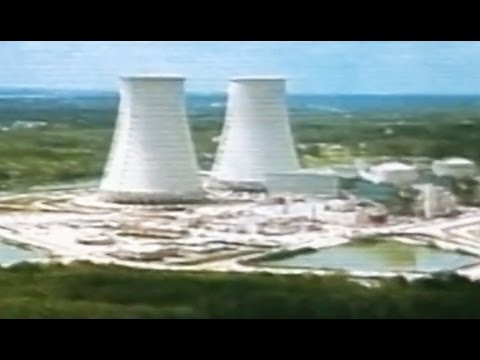Nuclear Weapons, Power, Radiation & Radioactivity playlist:
How 12 nations, Belgium, Canada, Finland, France, Germany, Japan, The Netherlands, Spain, Sweden, Switzerland, the United Kingdom, and the United States, deal with or intend to deal with radioactive nuclear waste. These 12 countries work together within the Nuclear Energy Agency of the OECD (Organization for Economic Co-operation and Development).
Public domain film from the US National Archives, slightly cropped to remove uneven edges, with the aspect ratio corrected, and one-pass brightness-contrast-color correction & mild video noise reduction applied.
The soundtrack was also processed with volume normalization, noise reduction, clipping reduction, and/or equalization (the resulting sound, though not perfect, is far less noisy than the original).
High-level radioactive waste management concerns how radioactive materials created during production of nuclear power and nuclear weapons are dealt with. Radioactive waste contains a mixture of short-lived and long-lived nuclides, as well as non-radioactive nuclides. There was reported some 47,000 tonnes of high-level nuclear waste stored in the USA in 2002.
The most troublesome transuranic elements in spent fuel are neptunium-237 (half-life two million years) and plutonium-239 (half-life 24,000 years). Consequently, high-level radioactive waste requires sophisticated treatment and management to successfully isolate it from the biosphere. This usually necessitates treatment, followed by a long-term management strategy involving permanent storage, disposal or transformation of the waste into a non-toxic form. Radioactive decay follows the half-life rule, which means that the rate of decay is inversely proportional to the duration of decay. In other words, the radiation from a long-lived isotope like iodine-129 will be much less intense than that of short-lived isotope like iodine-131.
Governments around the world are considering a range of waste management and disposal options, usually involving deep-geologic placement, although there has been limited progress toward implementing long-term waste management solutions. This is partly because the timeframes in question when dealing with radioactive waste range from 10,000 to millions of years, according to studies based on the effect of estimated radiation doses.
Thus, Alfvén identified two fundamental prerequisites for effective management of high-level radioactive waste: (1) stable geological formations, and (2) stable human institutions over hundreds of thousands of years. As Alfvén suggests, no known human civilization has ever endured for so long, and no geologic formation of adequate size for a permanent radioactive waste repository has yet been discovered that has been stable for so long a period. Nevertheless, avoiding confronting the risks associated with managing radioactive wastes may create countervailing risks of greater magnitude. Radioactive waste management is an example of policy analysis that requires special attention to ethical concerns, examined in the light of uncertainty and futurity: consideration of ‘the impacts of practices and technologies on future generations’.
There is a debate over what should constitute an acceptable scientific and engineering foundation for proceeding with radioactive waste disposal strategies. There are those who have argued, on the basis of complex geochemical simulation models, that relinquishing control over radioactive materials to geohydrologic processes at repository closure is an acceptable risk. They maintain that so-called “natural analogues” inhibit subterranean movement of radionuclides, making disposal of radioactive wastes in stable geologic formations unnecessary. However, existing models of these processes are empirically underdetermined: due to the subterranean nature of such processes in solid geologic formations, the accuracy of computer simulation models has not been verified by empirical observation, certainly not over periods of time equivalent to the lethal half-lives of high-level radioactive waste. On the other hand, some insist deep geologic repositories in stable geologic formations are necessary. National management plans of various countries display a variety of approaches to resolving this debate.
Researchers suggest that forecasts of health detriment for such long periods should be examined critically. Practical studies only consider up to 100 years as far as effective planning and cost evaluations are concerned. Long term behaviour of radioactive wastes remains a subject for ongoing research…

